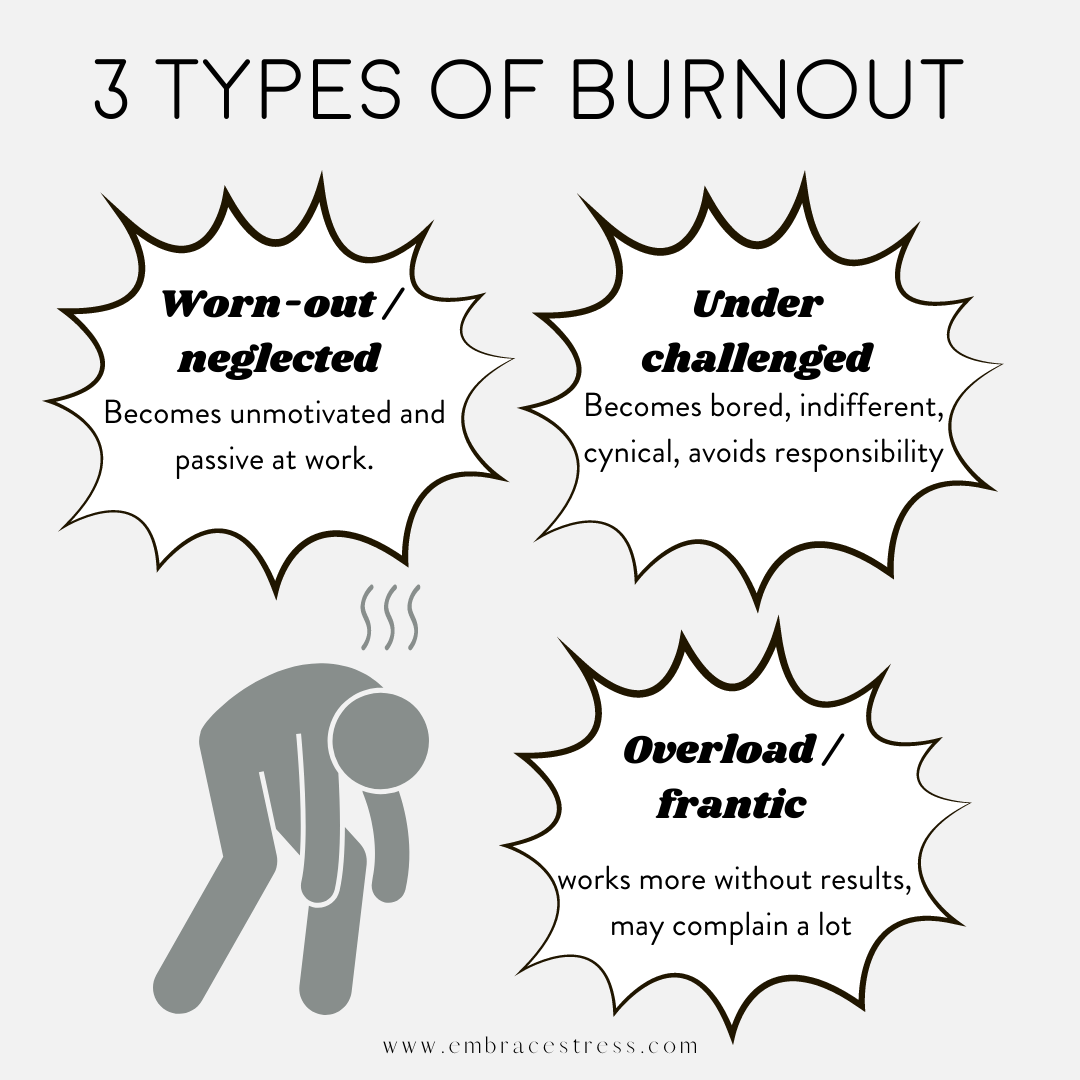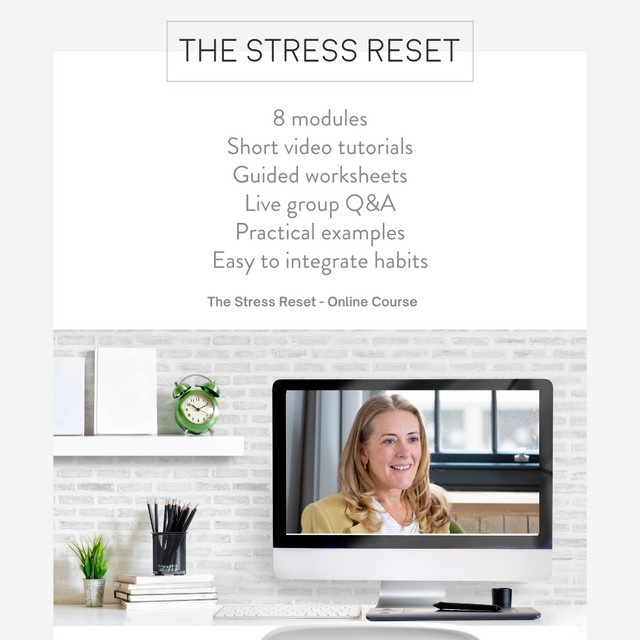The three types of burnout
Jan 31, 2022
If you got through 2021 on the edge of burnout, it may not be caused by overwork.
Burnout isn’t, as many people think, purely to result of poor boundary setting or a toxic work culture. We assume we can't be burnout if we haven't been working non-stop.
But burnout and stress in general is broader than that… and therefore there is more we can do to catch it early and prevent it.
Recent research suggests that more than half of people are currently experiencing some form of burn out (significantly more than pre-pandemic) and over time 3 out of 4 full-time employees experience burnout symptoms at least sometimes (76%)
(You can find more details about the symptoms of burnout in my first post on burnout - HERE - Am I burning out or just stressed & exhausted )
Burnout isn’t just overworked, overwhelmed and over-tired.
It is widely assumed that burnout is just the result of working too hard. Of having poor work habits, no boundaries - sacrificing one’s wellbeing in the name of work goals.
But burnout can come from more than the stress associated with overworking.
Research by Farber (1990) actually identified three different types of burnout.
Worn-out / neglected:
Gives up completely under the demands of the job and stress. There is a sense of lack of control, helplessness and feeling neglected by those around them.
Tend to become unmotivated and passive at work.
Under-challenged:
Feels unappreciated and under-utilised at work, possibly from repetitive work, often in my experience from lack of learning or growth.
They become bored (or “bore-out”), indifferent, cynical, avoid responsibility and general distance themselves from their work.
Overload /Frantic:
How most of us think of burnout… nothing left to give because the ambitious employee is running on empty, working increasingly hard at the expense of own wellbeing & personal life.
Tend to work more without achieving more, may express this by complaining a lot.
Identify what type of burnout you have
If you are feeling burnt out, or realise (like many) that you got to through 2021 at or on the edge of burnout it is worth identifying the underlying cause.
Which one of the types of burnout above best describes how you feel?
It might be helpful to think about which of the following triggers you most identify with
1. Work overload
2. Insufficient reward or acknowledgement
3. Lack of control
4. Lack of community – for support or shared goals
5. Low levels of fairness or trust
6. Conflicting values
Bottom line is that these are all contributors to stress … and it’s the build up of this stress over time that ultimately leads to burnout.
The eight pillars of The Stress Reset program are designed to address each one of these, identifying triggers and symptom early to build a buffer against stress.
But strengthening these pillars on a regular basis will also optimise the way we live by reducing the day to day headwinds – most of which we may not realise we are fighting.
Find out more about The Stress Reset course here:


THE STRESS RESET GROUP PROGRAM
I will be re-launching The Stress Reset group coaching program in February.
As a subscriber and long-term supporter of Embrace Stress, if you sign up before it officially opens to new participants, you will receive a free 1-1 coaching session.
This is your chance to recognise, reframe and reset your relationship with stress once and for all.
Learn to handle pressure points calmly and with confidence. Build resilience to face challenges in the future. And optimise your day-to-day performance by creating a safety net against life's little stressors.
GOT QUESTIONS? ... ASK ME DIRECTLY USING THIS LINK
JOIN THE RESET LEADERSHIP COMMUNITY
Sign up and get the latest Reset resources, free exercises and programme updates, direct to your inbox.
We hate SPAM. We will never sell your information, for any reason.

